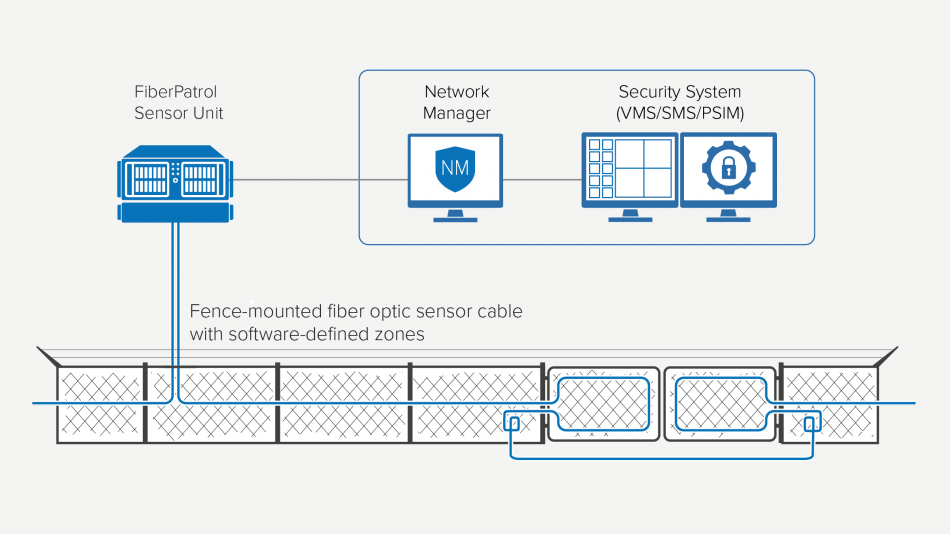Improve Your Safety And Security With Advanced Fiber Optic Safety Systems
In a period where protection is paramount, advanced fiber optic protection systems present a compelling option for enhancing safety throughout various atmospheres. What effects do these improvements hold for future safety and security actions?
Advantages of Fiber Optic Security
Harnessing the benefits of fiber optic modern technology dramatically improves safety systems throughout numerous applications. Among the primary advantages is the raised data transfer ability, enabling for the transmission of large amounts of information at high rates. This is particularly critical for real-time video clip security, where high-resolution feeds can be sent without latency, guaranteeing immediate feedback capabilities.
In addition, optical fiber display superior resistance to electromagnetic disturbance, which is vital in environments with prospective signal interruptions. This dependability ensures regular performance in vital safety operations. Moreover, fiber optic cables are much less prone to tapping and unauthorized access contrasted to standard copper wiring, thereby enhancing information stability and privacy.
Another remarkable advantage is the durability of fiber optic systems; they are more immune to ecological aspects such as wetness, temperature level changes, and destructive materials. This durability equates to decrease upkeep costs and longer lifespans for security installations.
Last but not least, the light-weight nature of fiber optic cables facilitates much easier installment and routing, especially in complicated infrastructures (fiber optic security system). Eventually, the combination of fiber optic technology into security systems not just bolsters defense actions however additionally optimizes functional efficiency
Key Features to Think About
When evaluating fiber optic protection systems, several key attributes have to be considered to make certain optimal performance and performance. Analyze the system's discovery variety and level of sensitivity; a substantial array enables for checking large locations, while high sensitivity ensures that also small disturbances are spotted quickly.
Next, take into consideration the combination abilities of the system. A fiber optic safety system need to flawlessly user interface with existing protection steps such as cams and alarm systems, creating a cohesive safety network.
Longevity and environmental resistance are additionally crucial attributes. Make sure that the system is made to stand up to harsh weather conditions and prospective physical dangers, as this will certainly extend its functional lifespan.

Last but not least, check out the scalability of the system. A robust fiber optic protection system should be conveniently expanding to suit future needs without significant overhauls. By carefully considering these features, you can choose a fiber optic security view solution that boosts safety and security and protection in your atmosphere.
Installation Refine Review
To successfully execute a fiber optic security system, a methodical installation procedure is vital. This process begins with a detailed site evaluation to establish the particular security requirements and to determine ideal places for fiber optic wires and safety devices. Following this evaluation, the installment group will develop a comprehensive plan, including cord pathways, necessary devices, and compliance with local policies.
Following, the installation entails laying the fiber optic wires, guaranteeing they are shielded from environmental factors and physical damage. Proper handling strategies are critical, as fiber optic wires are sensitive and can be conveniently damaged. After the cabling is mounted, connectors and terminations are thoroughly finished to make certain signal integrity.
The subsequent stage includes setting up security tools such as electronic cameras, activity detectors, and alarm system systems, all integrated with the fiber optic network. Extensive screening is conducted to verify that all parts are operating appropriately and to make sure ideal efficiency.

Comparing Fiber Optic to Conventional Equipments
The advancement of protection innovation has led to significant improvements in the contrast between fiber optic systems and typical copper-based systems. Fiber optic systems make use of light to transmit information, supplying premium bandwidth and rate compared to their copper equivalents. This leads to boosted data transmission abilities, making fiber optics optimal for high-resolution video security and real-time tracking.
In addition, fiber optic cable televisions are immune to electromagnetic disturbance, reducing the chance of signal destruction caused by external variables. This characteristic makes sure consistent efficiency, even Web Site in tough environments. On the other hand, traditional copper systems are extra at risk to disturbance, resulting in possible vulnerabilities in safety and security applications.
Longevity is another benefit of fiber optic systems. They are less susceptible to harm from environmental aspects such as moisture and temperature changes, which can compromise copper electrical wiring. Fiber optics are lighter and thinner, permitting for easier setup and reduced physical impact.
However, standard systems tend to have reduced initial costs, making them appealing for budget-conscious tasks. While fiber optic systems may call for a higher upfront financial investment, their long-lasting advantages-- such as reduced upkeep prices and greater dependability-- usually outweigh the preliminary expense, positioning them as an exceptional choice for contemporary protection demands.
Future Trends in Safety Technology
Emerging trends in safety and security technology are positioned to change the landscape of security and hazard discovery - fiber optic security system. As organizations progressively face sophisticated threats, technologies such as expert system (AI) and equipment knowing (ML) are coming to be indispensable to protection systems. These modern technologies enhance the ability of fiber optic systems by allowing real-time data analysis, determining anomalies, and anonymous automating reactions to potential violations
Additionally, the integration of the Net of Points (IoT) is transforming safety and security frameworks. IoT devices can provide thorough situational understanding and promote smooth communication between various protection components. This interconnectedness enables more reliable tracking and faster occurrence feedback times.
Biometric verification is also obtaining energy, giving a higher degree of safety through distinct physical characteristics. As this modern technology develops, it is most likely to be included into fiber optic systems for boosted gain access to control.
Final Thought
In final thought, progressed fiber optic safety systems represent a considerable innovation in security and surveillance innovation. The shift from conventional systems to fiber optic solutions reflects a growing trend in the direction of extra efficient and effective protection procedures in a significantly intricate technical landscape.